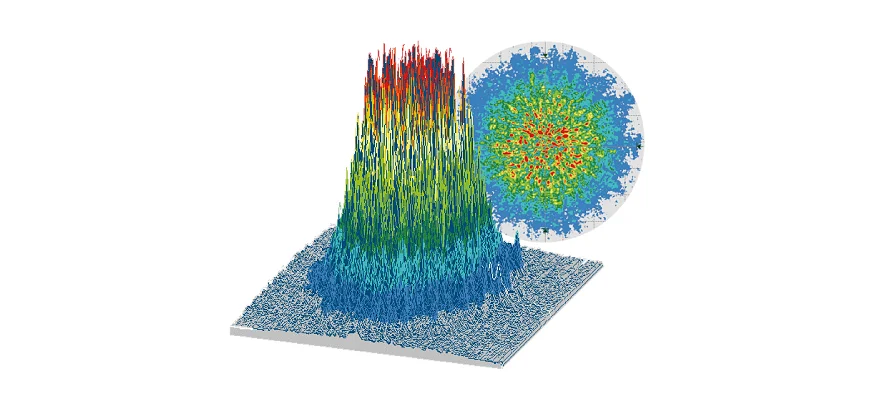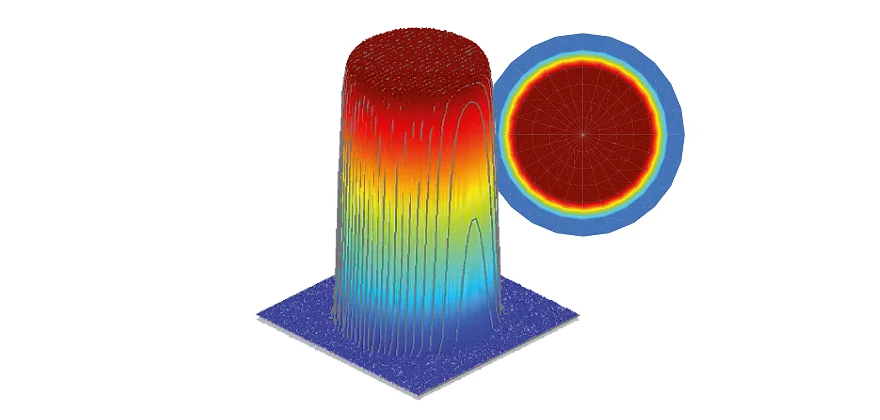Special features of multi-mode fibers
Typical Spectra for UV/VIS or VIS/NIR Multi-Mode Fiber Cables
Most of the multi-mode fibers from Schäfter+Kirchhoff are offered in a UV/VIS (High OH-) and in a VIS/NIR (low OH-) version. They have a different attenuation profile due to their different concentrations of OH- groups. OH- groups cause attenuation at IR wavelengths but they are beneficial for UV transmission.

Attenuation of UV/VIS and VIS/NIR multi-mode fibers
UV/VIS fibers should be used for transmitting wavelengths in the UV and VIS, VIS/NIR fibers are suitable for transmitting wavelengths in the VIS and NIR range.
Graded index vs. step index in Multi-Mode Fibers
Graded index vs. step index in Multi-Mode Fibers
While common single-mode fibers have a step-index profile for the refractive index, there are two types of multi-mode fibers: step-index and graded-index (gradient-index) .

Step index
Step-index fibers have a step profile with one refractive index n2 for the core and one for cladding (refractive index n1) throughout the fiber. The core diameter of a multi-mode fiber is rather large (>50 µm), allowing multiple modes of light guidance.

Graded index (Gradient index)
A graded-index fiber exhibits a gradual profile (almost parabolical in shape) for the refractive index, which results in a smaller modal dispersion because of the approximately sinusodial beam propagation along the fiber.
Intensity profile of multi-mode fibers
Influence of coherence of the laser on the beam profile of multimode fibers

Intensity profile: Multi-mode fiber with coherent light source
Typical speckle due to interference between the multiple modes.

intensity Profile: Multi-mode fiber with low coherent light source
No speckle effect on the intensity profile.
Mode mixing and beam profiles
The beam profile exiting a multimode fiber is strongly dependent on how the light interacts within the fiber and is often very different from that of a single-mode fiber - it might even change with time and fiber position. For a good, symmetric, and “super-Gaussian” distribution of light exiting the multimode fiber (aside from laser speckle), it is important that mode mixing has occurred within the fiber or that multiple modes have been excited from the start when coupling in.
For example, if you couple light into the fiber from a single-mode laser source, only a few modes will be excited. If you then change the fiber position or touch the fiber, the ex-fiber beam profile can change rapidly over time because different modes are excited that may not have a symmetric, Gaussian-like output (e.g. donut modes).
To avoid this, you can either make the multimode fiber longer (to increase mode mixing as it passes through the fiber) or coil the fiber with a smaller bend radius to increase mode mixing. You can also choose a smaller focal length to have a larger light cone when coupling into the fiber, which in turn excites more modes. Often a combination of these three strategies will result in a stable, “super-Gaussian” beam profile exiting the multimode fiber.
More information can be found here.